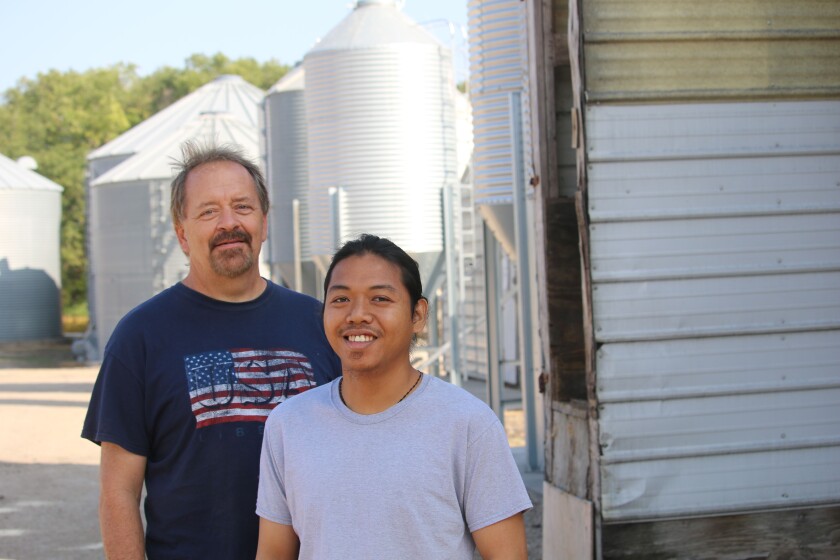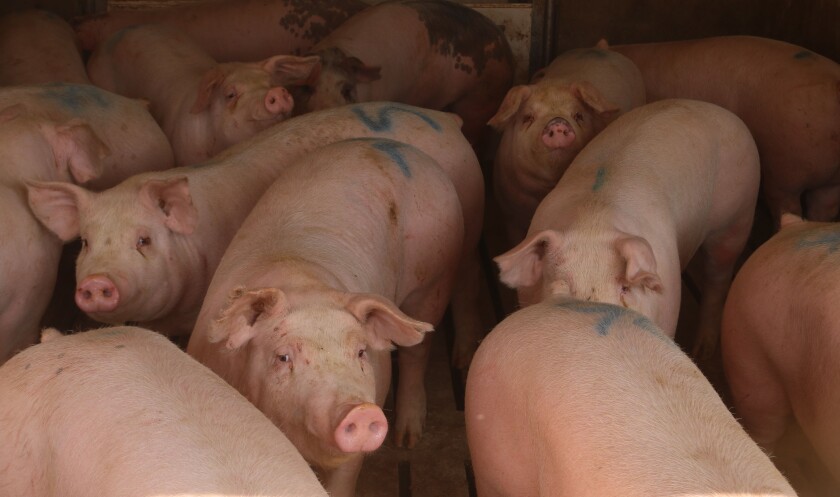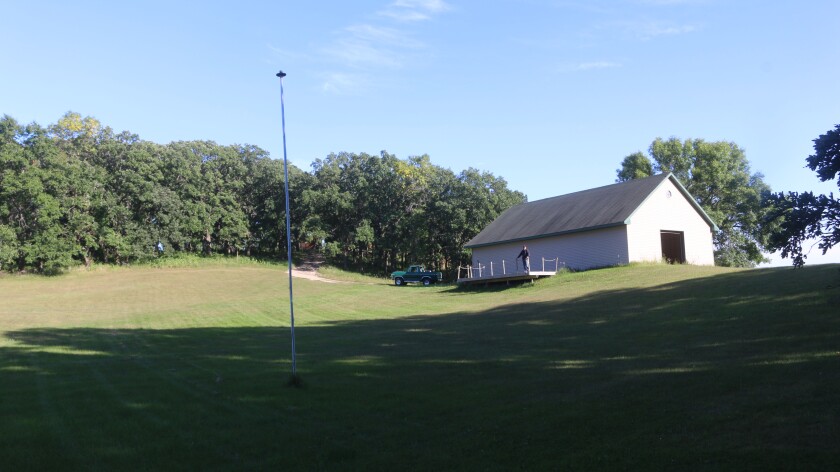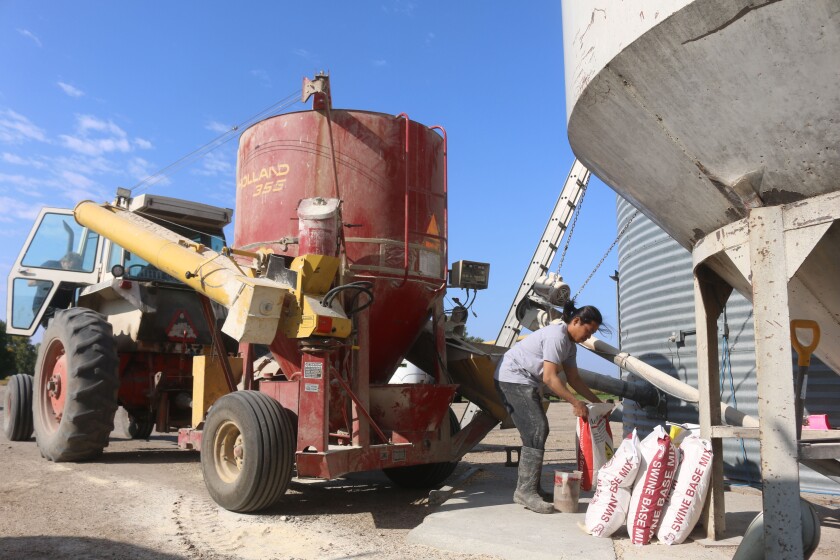ADA, Minn. — In a normal year, Communicating for Agriculture Educational Programs — a Fergus Falls, Minn., nonprofit — hosts 1,200 to 1,800 paid farm interns in the U.S. and Canada, working on farms in cultural and agricultural internships.
Since 1978, more than 40,000 visitors have been on U.S. farms because of the program. But because of COVID-19, hundreds of farmers are left in limbo without help, says Greg Smedsrud, the program’s managing partner.

Trainees come under the J-1 Visa Exchange Visitor Program — either as interns who are enrollees or trainees who have completed degrees. Though the numbers vary, CA typically places a total of 300 in the states of South Dakota, North Dakota, Minnesota, Iowa and Montana. Agriculture visitors come from about 48 countries, led by Europe, South America, Asia and Africa.
But 2020 has been anything but normal.
ADVERTISEMENT
In February, the CA personnel started to hear that U.S. consulates in intern countries were turning down intern applicants. Some trainees already in the U.S. were concerned about getting home.
In March 22, President Donald Trump suspended the J-1 program.
“Immediately the State Department closed down all of the consulates in allowing anyone else to come in,” Smedsrud says. (A U.S. District Court in northern California on Sept. 2 ruled to repeal it, but it is not clear whether that will stick.)
The U.S. Department of Labor, has categorized holders of H-2A temporary agricultural worker visas as essential workers, but not the J-1 educational visas, despite their hosts counting on them for labor.
The CA agricultural intern program was shut down — and without discussions with stakeholders.
"We were shocked, actually,” Smedsrud recalls.
From 4-H to pigs

David Roesch (pronounced RUSH) of Ada in northwest Minnesota has had a dozen interns from CA since 2004 and says he’ll have a tough time going without them.
ADVERTISEMENT
His trainees have come Brazil, Columbia, Ukraine and the Philippines. This year’s trainee was Raymund Joves, who lives in the Filipino city of Camiling, and graduated in animal science at his province’s Tarlac Agricultural University.
Joves, 24, says he came to learn hog farming technology on a small, but comprehensive hog enterprise. He says he pleasantly surprised by the friendliness of the culture: “Every people that I pass they say, 'hi and good morning,'” he says.
Roesch, 55, grew up on a Red River Valley farm and is rare for his livestock enterprise. He wanted to farm but his father didn’t have sugar beet stock or a lot of land. At age 12, Roesch started with four pigs in a 4-H project. At age 14, he borrowed $16,000 for a hog barn. He survived hog market cycles (including 8-cent-per-pound pigs in 1997) and became more efficient.
“About the only way I could make it work was build more (efficient) barns, get more pigs,” he says.

The Roesch farm is diversified, with corn and soybeans crops, and a 180-sow, farrow-to-finish swine operation that produces about 3,600 market hogs per year. It is small by industry standards but comprehensive. Roesch has four children, ages 14 to 22, but has depended on the trainees, whom all have been male.
For 20 years, Roesch farm has sold a load of about 185 head every two to three weeks, usually trucking them to the John Morrell (Smithfield) plant at Sioux Falls, S.D. (In April, Roesch was forced to sell about 900 animals directly to consumers through seven area locker plants, because of the Smithfield shutdowns from COVID-19.)
“It’s a lot of physical work here," Roesch says. “(If) a 280-pound pig, getting chased into the semi, turns around and decides to come back at Raymund, he has to grab it by the head and flip it over. We don’t want anybody to get hurt.”
ADVERTISEMENT

The Roesch farm experience is comprehensive, ranging from breeding sows, vaccinating, to making 11 different feed recipes for pigs. In midsummer, Roesch learned the program would be suspended until Dec. 31.
That means there will be no one replace Joves.
Joves flew back to the Philippines on Sept. 29, where he hopes to get a job with an agricultural company and help his father — a retired banker — on a small hobby hog farm. His Filipino girlfriend separately was a CA horticulture internship North Carolina.
With soybean harvest starting at the end of September, Roesch planned to fill in with some area high school kids.
“It’ll definitely be a challenge. It’s hard to find local help that’s qualified that has the work ethic," Roesch says.
Evolving group
“CA” initially stood for the “Creamery Association.” Greg Smedsrud’s father, Milt, who grew up on a dairy farm at Dalton, Minn., sold group health insurance to more than 100 small creameries and farmer-members across the state.
In 1972, the CA changed names to the “Communicating for Agriculture” moniker — a nonprofit for rural advocacy and health issues with up to 100,000 members. In 1979, the group started hosting exchange programs with Scandinavian countries, employing J-1 visa holders and teaching agricultural techniques and culture.
ADVERTISEMENT
Greg Smedsrud, who initially attained a master’s degree in music, in 1982 pursued a career in computer software marketing with stints at Apple Computer, NeXT Computer, and Novell, before returning to Minnesota in 2012 to work for CA.

CA Educational Exchange Programs typically employs about 28 people who work to vet trainees and and hosts, arrange transportation and complete paperwork. Most CA employees now have been laid off or are working on salary cuts.
“Other than the U.S., all other (higher) agricultural education programs have a one-year required internship — a practicum — to receive their degree in agronomy or agriculture, ” Smedsrud says.
Trainees spend up to 12 months as part of their higher education. They live and work at a wide range of farms — grain crops, livestock, horticulture and grape and wine.

Hosts pay a “prevailing wage,” set by the U.S. Department of Labor. Roesch, for example, provides a house, internet connections, cellphones, vehicle and one meal a day.
The CA culture is family-like.
ADVERTISEMENT
Smedsrud invites all of its trainees to come to the Smedsrud farm in rural Dalton, for a weekend at the farm in late July. About 200 make the trip — some fly from the coasts — and stay in a campground on the farm, equipped with stages and buildings, for the purpose.
The CA trainees typically march down Main Street in Ashby, Minn., for “Appreciation Days” celebration, waving flags from their home countries. The campground was quiet this year.
Looking ahead, CA is doing “aggressive recruitment” for 2021, hoping there is going to be a change. It seems likely by March, Smedsrud says.

Roesch hopes after the presidential election, ”things get back to normal” and that he’ll get a new trainee by March or April.
Smedsrud is hopeful: “We know this: People will want to travel, just like people want our social lives, here. People will want to continue to travel, will want to have experiences in other countries. I think that’s what we’re looking for, making sure that happens.”
It is not uncommon for host families to still be in communication with an intern some 30 years later, with children of interns named after hosts. Numerous CA trainees have become high-level ag officials in their home countries and captains of industry. The program is simply, “important to the world,” Smedsrud says.
ADVERTISEMENT









